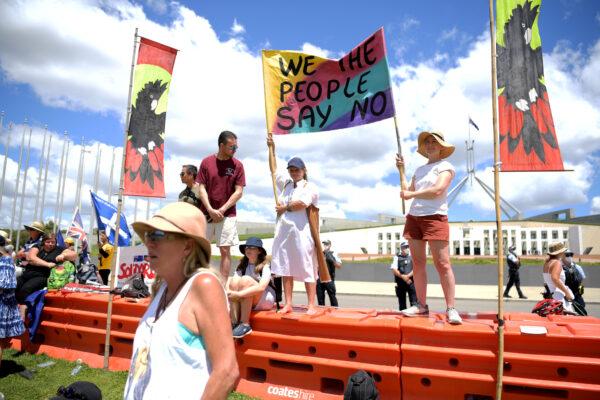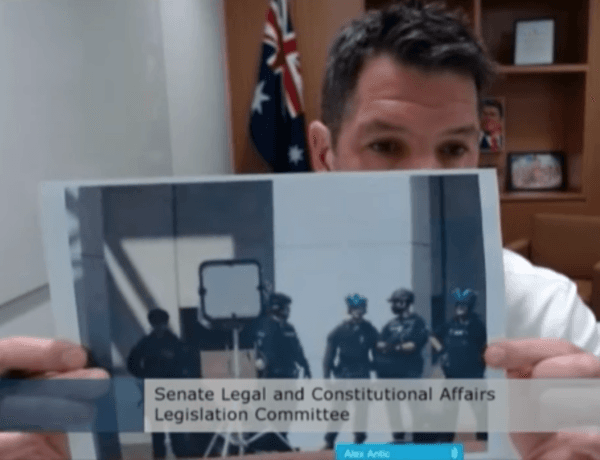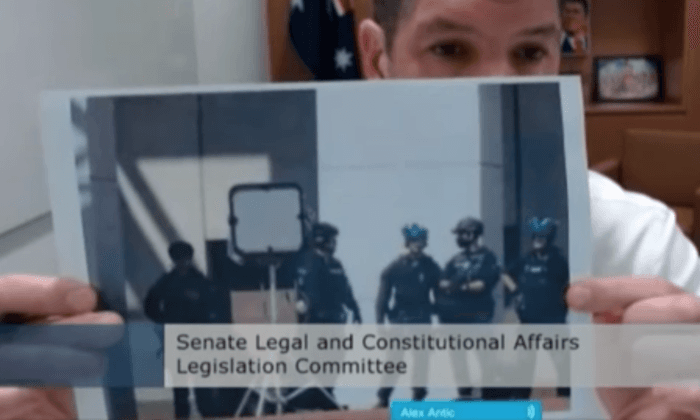Australian Capital Territory (ACT) Policing have confirmed the use of a Long Range Acoustic Device (LRAD)—often regarded as a sonic weapon—at the massive protest against vaccine mandates in Canberra on Feb. 12, despite the Australian Federal Police (AFP) commissioner describing the crowd as “well behaved.”
“ACT Policing has deployed several types of loudspeakers and amplification devices to quickly and effectively convey voice messages to large, and often loud, crowds of people during the recent protest activity in Canberra,” an ACT Policing spokesperson said in a statement to The Epoch Times on Feb. 16.
“The [LRADs] were only used to convey spoken-word messages. The ‘alert’ function was not used.”
LRADs, also known as acoustic weapons or sound cannons, are used to project very loud sounds over long distances. While the voice function can be helpful to communicate in loud settings, the device’s most dangerous setting, the alert function, can cause brain damage, permanent hearing loss, tinnitus (ringing in the ears), dizziness, and disorientation.
The LRADs work by using hundreds of transducers to create a highly concentrated and amplified sound that can be narrowed to focus on specific targeted areas. Similar devices were used by the U.S. military in Iraq in 2004.
Protest attendees have since taken to social media to complain about symptoms they say are a result of the LRADs. However, The Epoch Times has not been able to independently verify these claims.

Earlier in the week, during a Senate estimates hearing on Feb. 14, senators Alex Antic and Malcolm Roberts sought confirmation from AFP Commissioner Reece Kershaw about whether the sonic weapons were present and deployed at the protests.
Responding to Roberts, Kershaw said: “That would be something that is with our police methodology which we would have to look at some type of public interest immunity claim, Senator.”
Roberts responded: “Surely it’s in the public interest to know whether or not they were there without delving too much into it?”
“I‘d have to ... If I could take that on notice, I’d have to get advice,” Kershaw said.

Committee chair Sen. Sarah Henderson politely interjected to inform Antic that Kershaw had already taken the question on notice from Roberts.
“With the benefit of having that photograph which tends to confirm it, we still can’t confirm that that device was there on the day?” Antic said.
“Yeah, I think to be proper ... I'd like to take that on notice,” Kershaw said.

Antic noted that police only arrested three people out of the tens of thousands (the actual crowd size is disputed) compared to far smaller protests by other groups held at the same location where arrest numbers were higher.
Police Commissioner Kershaw agreed with Antic’s characterisation of the Feb. 12 protests as “mostly peaceful.”
“Overall the crowd were well-behaved and you probably saw there was ... children and families who were involved,” Kershaw said.
“Pretty well behaved. A lot of poor attitudes though, but there’s no offence for that. So police did cop a fair bit of abuse, but again, it didn’t cross into the criminal threshold.”
The anti-vaccine mandates protest was attended by Australians from all walks of life and made up of people who were both vaccinated and unvaccinated but are against the state government mandates.






Friends Read Free